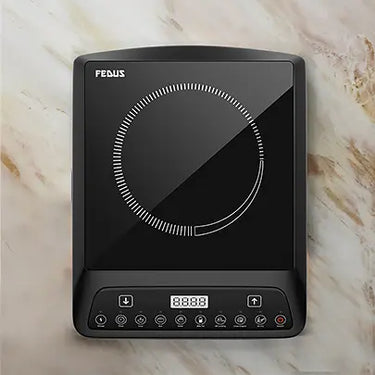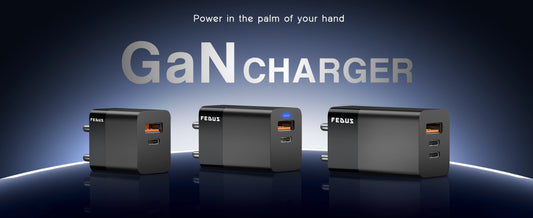When choosing an Ethernet cable for your network, terms like U/FTP and S/FTP can feel like tech jargon overload. But these labels aren’t as complicated as they seem. They describe the way Ethernet cables are designed to reduce interference and improve performance. Let’s break it down in simple terms!
Why Shielding Matters
Ethernet cables carry data as electrical signals. But in a world filled with Wi-Fi signals, electronics, and power cables, these signals can face interference. Shielding—thin layers of metallic material—helps protect the cable from interference, ensuring your data travels smoothly and quickly.
The Building Blocks of Shielding Terms
The terms U, F, and S describe the cable’s shielding:
- U = Unshielded: No shielding is present.
- F = Foil shielding: A thin layer of metal foil is wrapped around the cable.
- S = Braided shielding: A mesh of metal strands covers the cable.
FTP stands for Foiled Twisted Pair, referring to individual twisted pairs of wires wrapped in foil.
Common Cable Types Explained
Here’s a closer look at some common Ethernet cable shielding types:
U/FTP (Unshielded Overall, Foiled Twisted Pair) is a type of Ethernet cable that combines no overall shielding around the cable with foil shielding around each individual twisted pair of wires inside. This design offers some protection against interference, while still being more cost-effective compared to fully shielded cables.
Key Features of U/FTP:
- Foil Shielding Around Each Pair: Each twisted pair of wires inside the cable is wrapped in a thin layer of foil. This provides protection against interference on a per-pair basis, improving signal quality and reducing crosstalk (interference between pairs).
- No Outer Shielding: Unlike fully shielded cables, U/FTP has no outer shielding around the entire cable, making it lighter and more flexible.
- Twisted Pairs: The individual pairs of wires are twisted together to reduce interference and improve signal clarity.
Best Use:
- Moderate Interference Environments: U/FTP cables are ideal for environments where there is moderate electrical interference, such as small office spaces, residential areas, or business environments with some electronic devices that might cause noise.
- Home and Office Networks: Suitable for networks where a little more protection from interference is needed, but the overall shielding isn’t essential.
Advantages:
- Reduced Crosstalk: The foil shielding around each twisted pair reduces the chance of signal degradation due to interference between wires.
- Cost-Effective: It offers a balance between performance and price, making it a good choice for environments where you need some protection but don’t want to invest in high-end cables.
Limitations:
- Limited Protection: While it helps reduce interference between the wires themselves, it doesn’t provide as much overall shielding as more expensive options like S/FTP cables.
U/UTP (Unshielded Twisted Pair) is a type of Ethernet cable that lacks any shielding around the individual pairs of wires or the overall cable. It is the most basic and commonly used type of Ethernet cable, often found in home networks and office setups with minimal electrical interference.
Key Features of U/UTP:
- No Shielding: The cable has no additional layers of foil or mesh for protection against interference.
- Twisted Pairs: Inside the cable, the wires are twisted together in pairs to help reduce electromagnetic interference from nearby cables or devices.
- Cost-Effective: Since it doesn’t have additional shielding, U/UTP cables are cheaper to manufacture and, thus, more affordable for basic networking needs.
Best Use:
- Home Networks: Great for standard internet browsing, streaming, and small-scale office use where interference is minimal.
- Short Distances: Works best for shorter cable runs in areas with low electrical noise.
Limitations:
U/UTP cables can be more vulnerable to interference from external sources like power lines, machinery, or other cables, making them less ideal for high-interference environments.
S/FTP (Shielded Overall, Foiled Twisted Pair) is an Ethernet cable type that offers maximum protection against interference. It combines braided shielding around the entire cable with foil shielding around each individual twisted pair of wires inside. This dual shielding design makes it ideal for environments where high performance and minimal interference are essential.
Key Features of S/FTP:
- Braided Shielding (Overall Shielding): A mesh of metal strands (often copper or aluminum) wraps around the entire cable, protecting it from external electromagnetic interference (EMI) from sources like nearby power cables, equipment, or radio signals.
- Foil Shielding Around Each Pair: Each twisted pair of wires is individually wrapped in a layer of foil to protect against crosstalk (interference between pairs of wires inside the cable).
- Twisted Pairs: As with other Ethernet cables, the wires inside are twisted in pairs, further reducing the chance of interference and signal degradation.
Best Use:
- High-Performance Networks: S/FTP cables are perfect for environments that demand high-speed data transmission, such as data centers, high-frequency trading environments, or large office networks where there is heavy equipment that could generate interference.
- Industrial or Commercial Environments: Useful in spaces with significant electrical interference from heavy machinery or power lines.
Advantages:
- Enhanced Interference Protection: The combination of both foil and braided shielding offers superior protection against external and internal interference, making it one of the best options for maintaining data integrity in noisy environments.
- Higher Speeds and Reliability: This shielding allows S/FTP cables to support higher speeds (like Gigabit Ethernet and 10GbE) over longer distances without signal loss or degradation.
- Future-Proofing: Ideal for future-proofing networks that may need to support high bandwidth applications.
Limitations:
- Cost: S/FTP cables tend to be more expensive due to the extra materials used for shielding.
- Less Flexibility: The additional shielding makes these cables bulkier and less flexible, which might make installation a bit more challenging in tight spaces.
F/UTP (Foiled Overall, Unshielded Twisted Pair) is an Ethernet cable that features foil shielding around the entire cable but no shielding around the individual twisted pairs of wires inside. This type of cable offers a middle ground between completely unshielded cables (like U/UTP) and more heavily shielded cables (like S/FTP).
Key Features of F/UTP:
- Foil Shielding Around the Cable: A layer of foil wraps around all the twisted pairs inside the cable. This helps protect the cable from external interference and noise, such as electromagnetic interference (EMI) from nearby equipment or cables.
- Unshielded Twisted Pairs: The individual wire pairs inside the cable are twisted together, but they don’t have additional shielding, which makes them more vulnerable to internal interference (crosstalk) between pairs.
- Cost-Effective: It offers better protection than basic U/UTP cables while being less expensive than S/FTP cables.
Best Use:
- Office and Residential Networks: F/UTP is ideal for moderate interference environments such as homes or small offices where external interference is a concern but full shielding is not necessary.
- Short to Medium Cable Runs: Suitable for environments where you need some protection against interference but don’t require the highest level of performance.
Advantages:
- Protection from External Interference: The foil shielding around the cable provides protection against external EMI, making it better than U/UTP for environments with moderate electrical noise.
- Cost-Effective Option: F/UTP offers a balance between cost and performance. It is more affordable than fully shielded cables like S/FTP, while still providing better protection against external interference.
Limitations:
- No Internal Pair Shielding: While the overall foil helps protect against external interference, the individual wire pairs inside are unshielded, making the cable more susceptible to crosstalk (interference between the pairs inside the cable).
- Not Ideal for High-Interference Areas: In environments with significant interference (like data centers or areas with heavy machinery), F/UTP may not offer enough protection compared to fully shielded cables.
S/UTP (Shielded Overall, Unshielded Twisted Pair) is an Ethernet cable that combines braided shielding around the entire cable with unshielded individual twisted pairs inside. It offers some protection from external interference, but it doesn't protect the internal pairs of wires from crosstalk (interference between the pairs inside the cable).
Key Features of S/UTP:
- Braided Shielding Around the Cable: A mesh of metal strands (usually copper or aluminum) wraps around the entire cable, providing protection from external electromagnetic interference (EMI) or noise generated by nearby electronics, machinery, or power cables.
- Unshielded Twisted Pairs: The twisted pairs inside the cable are not individually shielded, meaning they are more vulnerable to internal interference (crosstalk) between the wires.
- Durability: The braided shielding around the cable adds extra durability, making it more resistant to physical damage compared to cables with no shielding.
Best Use:
- Moderate Interference Environments: S/UTP is well-suited for areas with some external interference (such as small offices or residential environments) but where crosstalk (interference between pairs inside the cable) is not a major concern.
- Networking with Higher Durability Needs: This cable type is also useful in environments where the cable’s physical durability is a priority, such as areas with heavy foot traffic or potential exposure to physical wear and tear.
Advantages:
- Protection from External Interference: The braided shield protects the cable from external noise and interference, ensuring more stable and reliable data transmission, especially in environments with electronic devices or equipment that might emit EMI.
- Durable: The additional braided shielding gives S/UTP cables extra protection from physical damage, making them more robust in industrial or high-traffic areas.
Limitations:
- No Internal Shielding: While the outer shield protects against external interference, the lack of individual shielding around the twisted pairs inside the cable means the cable is still susceptible to crosstalk (signal interference between the pairs).
- Not Ideal for High-Interference Areas: For environments with a lot of electronic noise or where high-speed data transmission is required, cables like S/FTP may be more suitable, as they offer better internal protection.
Which Cable Should You Choose?
Your choice depends on your network’s environment:
- Home Use: U/UTP or U/FTP cables are typically sufficient.
- Offices or Apartments: U/FTP or F/UTP offers better interference protection.
- High-Performance Environments: S/FTP is the gold standard for reliability in interference-heavy areas.
Quick Tip: Don’t Forget the Category!
Shielding isn’t the only factor to consider. Look at the Category (Cat5, Cat6, Cat7, etc.), which determines the cable’s speed and bandwidth capabilities. Combining the right shielding with the correct category ensures optimal performance.
Conclusion
Understanding Ethernet cable standards like U/FTP and S/FTP doesn’t have to be intimidating. Shielding is just a way to keep your data flowing smoothly in noisy environments. Choose the right cable based on your needs, and you’ll enjoy a stable, fast network.









